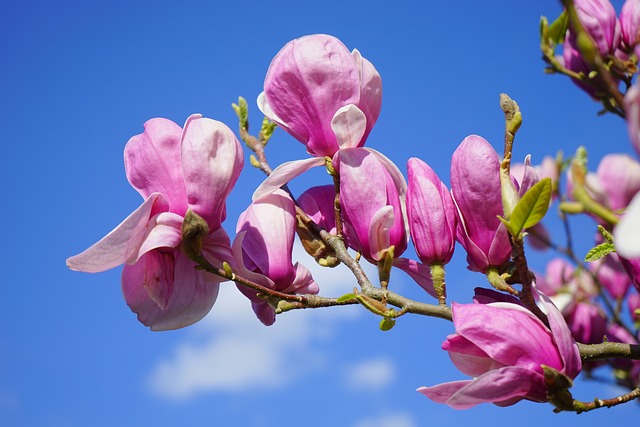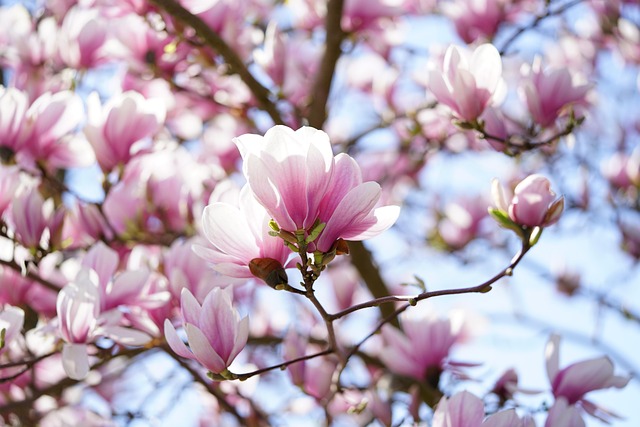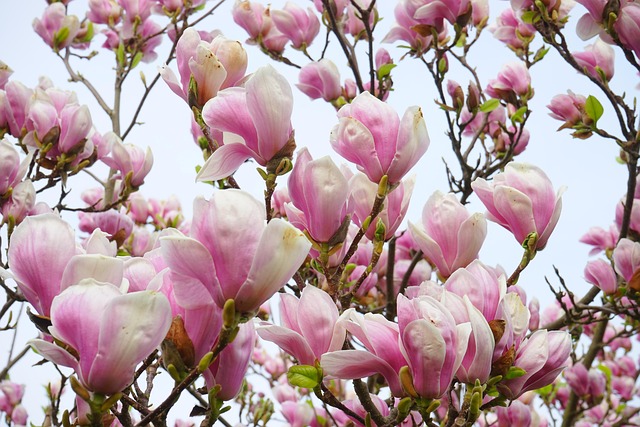Japan’s magnolia varieties represent a profound connection between nature and culture that spans over 1,400 years of horticultural heritage. While many associate magnolias with Chinese origins, Japan has cultivated and developed its own distinct varieties that have become integral to traditional Japanese garden design and seasonal celebrations. From the pristine white flowers of Hakumokuren (白木蓮) to the delicate star-shaped blooms of Shidekobushi (四手辛夷), these magnificent trees offer a window into Japan’s sophisticated understanding of botanical beauty and seasonal awareness that forms the heart of Japanese aesthetics.
- Japan’s Native Magnolia Heritage: More Than Just Beauty
- Essential Japanese Magnolia Varieties You Should Know
- Cultural Significance in Japanese Gardens
- Traditional Japanese Gardening with Magnolias
- Seasonal Beauty and Hanami Traditions
- Famous Magnolia Viewing Spots in Japan
- Growing Japanese Magnolias: Traditional Wisdom
- Symbolism and Flower Language (Hanakotoba)
- Summary
Japan’s Native Magnolia Heritage: More Than Just Beauty
Japan’s relationship with magnolias extends far beyond ornamental appreciation. The country is home to several native magnolia species that evolved in Japan’s unique climate conditions, making them perfectly adapted to the archipelago’s distinct seasons. Kobushi (Magnolia kobus) and Shidekobushi (Magnolia stellata) are among Japan’s indigenous treasures, thriving in the mountainous regions and becoming symbols of resilience and renewal.
These native varieties differ significantly from their Chinese relatives in their growth patterns, flowering times, and cultural significance. Japanese magnolias typically bloom before their leaves emerge, creating the dramatic visual impact that has inspired centuries of poetry, art, and garden design. This characteristic has made magnolias an essential element in the Japanese concept of mono no aware – the bittersweet awareness of the impermanence of all things.
Essential Japanese Magnolia Varieties You Should Know

Shidekobushi (Magnolia stellata) – The Star Magnolia
Shidekobushi, or Star Magnolia, is Japan’s most delicate native magnolia variety. Endemic to the Tokai region of central Honshu, this species produces numerous narrow, strap-like petals that create a distinctive star-shaped flower. Unlike larger magnolia varieties, Shidekobushi typically grows as a multi-stemmed shrub reaching 4-5 meters in height.
The blooming period occurs in early spring, often while snow still lingers in mountain areas, making it a powerful symbol of hope and perseverance in Japanese culture. Its pure white flowers against bare branches create one of nature’s most striking displays, often lasting 7-10 days depending on weather conditions.
Kobushi (Magnolia kobus) – The Northern Japanese Magnolia
Kobushi is perhaps Japan’s most culturally significant magnolia, deeply embedded in folklore and traditional medicine. The name “kobushi” derives from the distinctive fist-like shape of its flower buds. This hardy species can withstand Japan’s harsh winters and grows throughout Honshu, Shikoku, and Kyushu.
Traditionally, Kobushi blooms have served as natural calendars for Japanese farmers, indicating the optimal time for rice planting. The flowers appear before the leaves, creating spectacular displays along mountainsides and valleys. In traditional medicine, the flower buds (called “shin-i” in Japanese) have been used for treating nasal congestion and headaches.
Shimokkren vs. Hakumokuren: Understanding the Distinction
While not native to Japan, Shimokkren (Magnolia liliiflora) and Hakumokuren (Magnolia denudata) have become so integrated into Japanese culture that many consider them honorary Japanese varieties. Both were introduced from China over a millennium ago and have since developed unique characteristics in Japanese cultivation.
| Characteristic | Shimokkren (Purple) | Hakumokuren (White) |
|---|---|---|
| Flower Color | Purple outside, white inside | Pure white |
| Blooming Time | Mid to late March | Early March |
| Growth Habit | Multi-stemmed, 4-6m | Single trunk, 10-15m |
| Cultural Symbolism | Perseverance, nobility | Purity, hope |
Cultural Significance in Japanese Gardens
In traditional Japanese garden design, magnolias serve as focal points that embody the principle of seasonal beauty. Garden masters strategically place magnolia trees to create viewing angles that change throughout the year, with the spring blooming period representing the pinnacle of the garden’s seasonal narrative.
The placement of magnolias follows ancient principles of asymmetrical balance and borrowed scenery (shakkei). Their dramatic blooming creates temporary focal points that draw the eye and invite contemplation, while their sculptural winter silhouettes provide structure to the garden’s bones.
Traditional Japanese Gardening with Magnolias

Japanese gardeners have developed specific techniques for cultivating magnolias that differ markedly from Western approaches. The traditional Japanese method emphasizes natural form over forced shaping, allowing the tree’s inherent character to emerge while providing subtle guidance.
Pruning is conducted with extreme care, typically only after flowering and limited to removing dead or crossing branches. The goal is to enhance the tree’s natural beauty rather than impose artificial forms. Japanese gardeners also pay careful attention to soil preparation, often amending heavy clay soils with organic matter to improve drainage while maintaining moisture retention.
Seasonal Beauty and Hanami Traditions
While cherry blossoms (sakura) dominate popular discussions of Japanese flower viewing, magnolias play an equally important role in seasonal celebrations. The practice of magnolia viewing, sometimes called “mokuren-mi,” predates the famous cherry blossom festivals and continues in many regions of Japan.
The ephemeral nature of magnolia blooms – typically lasting only one week – intensifies their emotional impact. This brief flowering period embodies the Japanese aesthetic principle that beauty is most poignant when transient. Many Japanese gardens time their spring openings to coincide with magnolia blooms, offering visitors the chance to experience this fleeting beauty.
Famous Magnolia Viewing Spots in Japan

Several renowned temples and gardens throughout Japan offer exceptional magnolia viewing experiences. Engaku-ji Temple in Kamakura stands as one of Japan’s premier magnolia destinations, featuring magnificent Hakumokuren trees that have inspired photographers and poets for generations.
The temple’s white magnolia, reportedly gifted by Chinese writer Lu Xun in 1933, creates a stunning backdrop against the ancient temple buildings each March. Visitors often share their experiences on social media, with the temple’s official Instagram account (@engakuji_kamakura) regularly featuring breathtaking magnolia photographs that capture the serene beauty of these ancient blooms against traditional architecture.
Other notable locations include Kyoto’s temple gardens, where magnolias complement the city’s famous cherry trees, and the mountainous regions of central Japan, where wild Kobushi create spectacular natural displays that can be seen from miles away.
Growing Japanese Magnolias: Traditional Wisdom
Soil and Climate Requirements in Japan
Japanese magnolia cultivation benefits from centuries of accumulated wisdom passed down through generations of gardeners. The key to success lies in understanding Japan’s unique climate conditions and soil characteristics.
Most Japanese varieties prefer slightly acidic, well-draining soil with consistent moisture. The traditional approach involves creating raised planting areas to improve drainage while incorporating organic matter such as composted pine needles to maintain soil acidity. This method reflects the natural forest floor conditions where many magnolias originate.
Pruning and Care Techniques
Traditional Japanese pruning philosophy emphasizes minimal intervention and respect for the tree’s natural form. The timing of any pruning is crucial – it should only be done immediately after flowering to avoid removing next year’s flower buds.
Japanese gardeners also practice a technique called “nipping,” where they remove only the growing tips of young shoots to encourage branching without making large cuts. This gentle approach results in more natural-looking trees with better flowering performance over time.
Symbolism and Flower Language (Hanakotoba)
In Japanese flower language (hanakotoba), magnolias carry deep symbolic meanings that reflect their characteristics and blooming patterns. Hakumokuren represents purity and nobility, while Shimokkren symbolizes perseverance and quiet strength. Kobushi embodies friendship and kindness, reflecting its role in Japanese rural communities where blooming trees served as gathering points for seasonal celebrations.
These symbolic associations have influenced Japanese art, literature, and garden design for centuries. The temporary nature of magnolia blooms serves as a metaphor for life’s precious moments, encouraging viewers to appreciate beauty while it lasts – a core principle of Japanese aesthetics that resonates with visitors from around the world.
Summary
Japan’s magnolia varieties represent far more than ornamental trees – they embody a sophisticated understanding of seasonal beauty, cultural symbolism, and horticultural excellence that has evolved over more than a millennium. From the native Kobushi and Shidekobushi to the adopted Hakumokuren and Shimokkren, these magnificent trees continue to play vital roles in Japanese gardens, cultural traditions, and seasonal celebrations.
Understanding these varieties from a Japanese perspective offers unique insights into the deep connections between nature, culture, and aesthetic philosophy that define traditional Japanese gardening. Whether you’re planning to visit Japan during magnolia season or seeking to incorporate these magnificent trees into your own garden, appreciating their cultural significance and traditional cultivation methods will enrich your experience and deepen your connection to these extraordinary botanical treasures.


